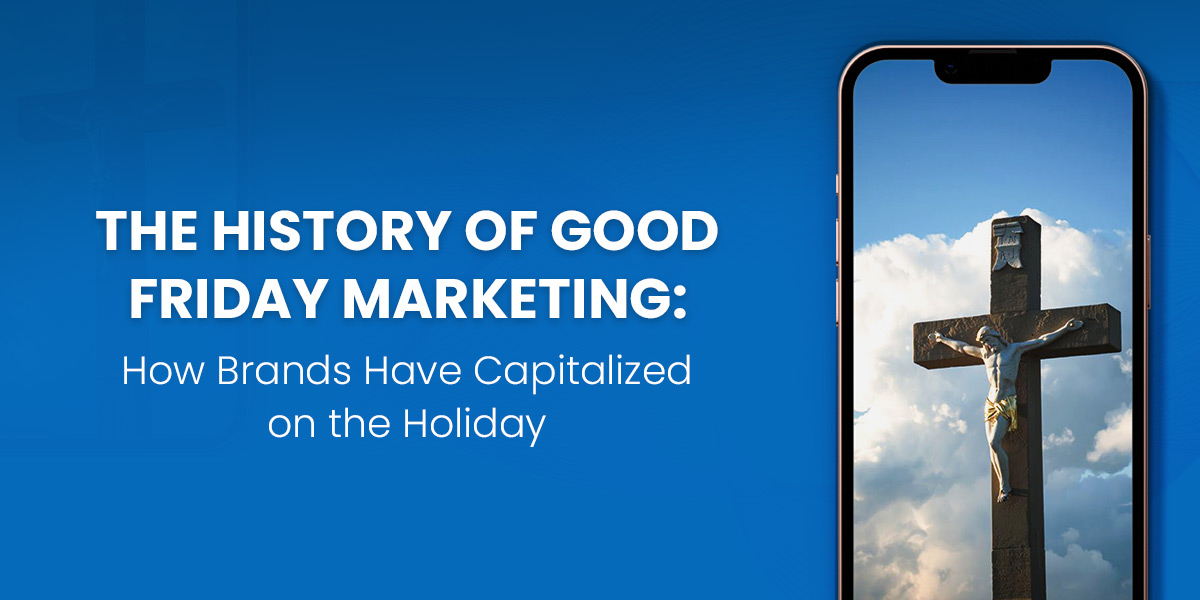
The History of Good Friday Marketing: How Brands Have Capitalized on the Holiday
Good Friday is a Christian holiday that commemorates Jesus Christ’s crucifixion. It occurs on the Friday preceding Easter Sunday and is observed by millions of Christians worldwide. While the day is primarily a religious observance, it has also become a popular Business Marketing opportunity. Because of our diverse population, Western holidays are gradually becoming a part of Indian culture as well. And this is a win-win situation for all businesses because it allows them to include a broader range of cultures and opportunities.
In this blog post, we will explore the history of Good Friday marketing and how brands have capitalized on the holiday over time.
Early Days of Good Friday Marketing
Good Friday marketing can be traced back to the early twentieth century. Marketing was done primarily through print media such as newspapers, magazines, and billboards back then. In the run-up to Good Friday, businesses would use these channels to promote their goods and services. The emphasis was primarily on promoting Easter-related products like chocolates, sweets, and gifts.
In the 1920s, Coca-Cola launched a campaign promoting its soft drink as the ideal accompaniment to Easter meals, which was one of the first examples of Good Friday Marketing. The advertisement depicted a family eating together, with a bottle of Coca-Cola prominently displayed on the table.
Post-War Marketing Boom
Marketing boomed in the postwar era as businesses sought ways to increase sales and expand their reach. During this time, Good Friday became an increasingly popular marketing opportunity, with businesses employing a variety of strategies to attract customers.
Cadbury launched one of the most memorable Good Friday campaigns in the 1950s. In 1953, the chocolate company introduced its iconic “Crème Egg” product and quickly began promoting it in the run-up to Easter. Cadbury’s clever marketing strategy, which included TV ads, billboards, and in-store promotions, contributed to the Crème Egg becoming one of the world’s most recognizable Easter treats.
The Easter bunny rose to prominence as a marketing tool in the 1960s. In the run-up to Easter, businesses began using the bunny to promote their products, with companies such as Nestle and Hershey’s using the bunny in their advertising campaigns. The Easter bunny quickly became synonymous with the holiday and is still a popular marketing tool today.
Modern-Day Good Friday Marketing
Good Friday marketing has become more creative and diverse in recent years. Businesses can now reach a larger audience through social media, email marketing, and others online thanks to the rise of digital marketing.
The 2014 campaign by the Canadian airline WestJet is one example of modern-day Good Friday marketing. Passengers on a flight from Toronto to Calgary were surprised with personalized gifts based on their Christmas wish lists. The “Christmas Miracle” campaign went viral, helping to raise brand awareness and positive sentiment for the airline.
Another notable example of Good Friday marketing can be found in REI’s 2017 campaign. Instead of shopping on Good Friday, the company launched a social media campaign encouraging customers to “opt outside” and enjoy nature. Customers loved the campaign, which helped to reinforce REI’s brand message of promoting a healthy and active lifestyle.
Since its beginnings, Good Friday marketing has come a long way. Businesses have used a variety of strategies to capitalize on the holiday, ranging from simple print ads to elaborate digital campaigns. While the emphasis has traditionally been on promoting Easter-related products, brands are now using Good Friday to connect with customers on a more personal level. Businesses are finding new and innovative ways to capitalize on this important holiday, whether it’s through charitable giving, promoting an active lifestyle, or simply spreading goodwill.


